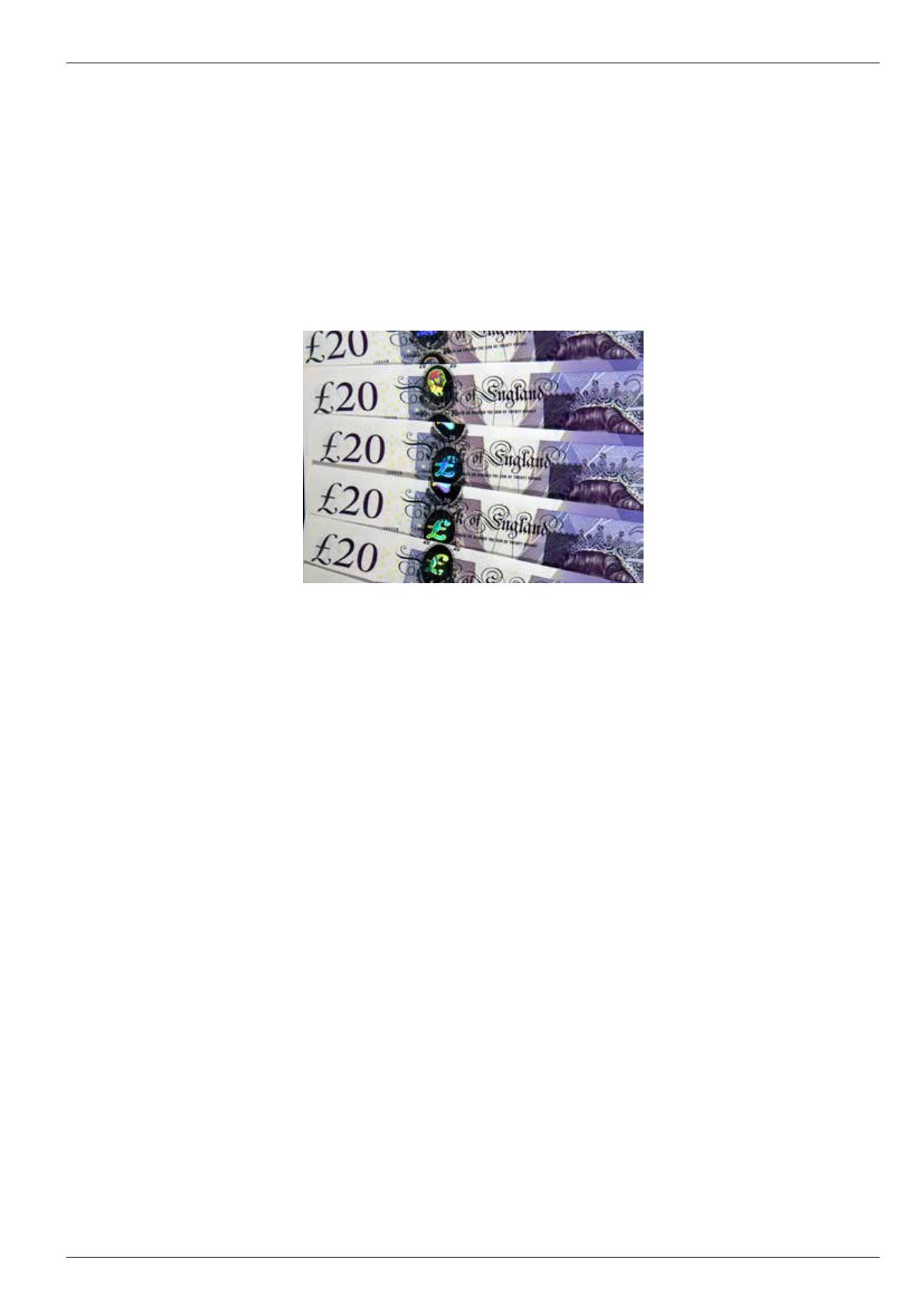
26
PRINT.IT
01732 759725
SECURITY PRINTING
Money is a
symbol of
success.
It represents
the fruits
of our
aspirations,
work and
productivity
and is part
of our social
standing
In the following extracts from a
new report,
The Digital Revolution:
The Future of Cash
, The Cambridge
Security Initiative (CSI) argues
that despite the alternatives, cash
is still king. It points out that in
stark contrast to the growing
cyber security threat to digital
currencies, banknotes benefit from
sophisticated printing techniques
that are continually being
developed to thwart counterfeiters.
Extract from Chapter 2:
Introduction
Money has proved to be one of
the most influential innovations
humans have ever created, and its
success lies in its continued use for
thousands of years. Money arose to
improve the process of barter and,
in the early days, included everything
from cowrie shells and stone disks
to shiny gold stones, all of which
were used for trading.
Recently, the biggest near-term
threat to cash appears to be from
electronic payments, including
systems based on cell phones
and mobile wallets. We now have
Google Wallets, Verizon and AT &
T, T-Mobile and others. This move
to digital, electronic and cyber is
self evidently based on strong
commercial influences, market
monitoring, functionality and global
interconnectedness. However, the
process does not adequately take
account of potential weaknesses,
security issues and unintended
consequences produced by this
digital revolution.
Recently, in the UK, the Payment
Council announced the phasing
out of cheques in 2019. This 350
year-old payment system, the use of
which has significantly declined in
the last couple of decades, has been
replaced in part by credit and debit
cards and other types of electronic
transfer and currency. David Birch
from the Digital Money Forum, using
Bank of England statistics, suggests
that cash payments represent 4%
of all payments in Britain by value,
although significantly they still
represent over half the number of
transactions because of the huge
number of smaller payments made
using printed and minted cash.
Extract from Chapter 5:
The importance and
security of money
Money is a symbol of success.
It represents the fruits of our
aspirations, work and productivity
and is part of our social standing.
The identity money gives us cannot
be digitised. The tangibility of cash
is important not just as a symbol of
the reality of money but as part of its
role as a household budgeting tool.
The 2012 fourth edition of
the Agis
Future of Cash
study
shows that the Great Recession,
which began in 2008, increased
global cash demand and use, as
consumers attempted to shore up
their savings and regain control over
their budgets. With this in mind,
it is essential for governments to
maintain control of printed cash and
continue to improve its quality and
security. This is a key aspect of the
government toolbox and is needed
to control the national economy and
security. It is also worth recalling the
role which circulating cash played in
the recent Greek economic crisis; in
The arrival in the UK of Google Android Pay and Samsung Pay is predicted to
accelerate the switch from cash to cashless payments, already given a big boost
by the introduction of contactless payments. Is the decline of cash terminal, as
some would suggest, or are reports of its death greatly exaggerated?
Banking on banknotes
this case, cash was one of the few
means of commercial functionality
when others were not working
properly.
Another factor propelling the
continued use of cash has been the
extension in the life of banknotes.
This has been achieved by the use
of new materials, such as polymer;
in 1988 Australia introduced the
first polymer notes. Subsequently,
spinoff advantages were found, for
example in preventing counterfeiting.
Polymer banknotes, which can
survive a hot 90-degree washing-
machine cycle are, according to
the Bank of England, scheduled to
replace the cotton paper £5 and £10
notes within the next few years. It is
anticipated that these will last more
than twice as long as existing notes,
stay cleaner (they are resistant to
dirt and moisture) and are almost
impossible to tear. Today, a typical
£5 note lasts for two years. Polymer
notes could last for around six years.
Ever since the invention of
paper money, counterfeiters have
attempted to create fake notes.
Some of their modern handiwork,
created with high-tech inks, papers
and printing presses, make them
difficult, in the first instance, to
distinguish from the real thing.
National banks combat counterfeiters
with difficult-to-copy watermarks,
holograms, forensic features and
other sophisticated measures, which
are being constantly improved by
the banknote industry, including
security printers such as Crane &
Co, Giesecke & Devrient, De La Rue,
SICPA and Orell Fussli.
In its continuing efforts to stop
counterfeiting the United States
Federal Reserve recently released
a new design for the $100 bill
using a colour palette. This new bill
has behind it a decade of security
advances, anti-counterfeiting
measures, such as holograms, raised
printing and ink-based artefacts
that appear to move and change
colour depending on the viewing
angle. Despite these sophisticated
security features, currency forgers
have a big financial incentive to
manufacture convincing fakes. In
these circumstances the banknote
industry is constantly looking at new
ways to keep ahead. Some of these
Banknote
printers use
watermarks,
holograms and
forensic features
to thwart
counterfeiters


